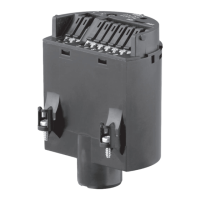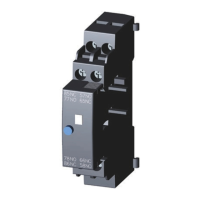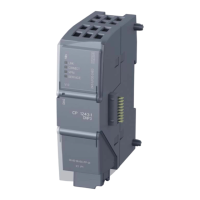Operating
3.3 Vibration amplitude diagnosis
SITRANS LVS100/200
12 Operating Instructions, 01/2019, A5E44839609-AA
Vibration amplitude diagnosis
NAMUR module (IEC 60947-5-6) and 8/16 mA or 4 to 20 mA model
Measurement quality is related to the vibration amplitude of the fork. The diagnostic LED
indicates the quality of the vibration being sent to the LVS200 electronics.
● Diagnostic LED off: measurement quality is good. The vibration amplitude is strong.
● Diagnostic LED blinking: measurement quality is poor and vibration amplitude is
decreasing as fork becomes encrusted. When this happens, set the sensitivity switch to
decreased sensitivity.
● Diagnostic LED on: vibration has stopped and fork is fully encrusted with material.
Current output setting
8/16 mA
The chart below illustrates the output current when:
● Fork is clean
● Fork is encrusted: weak vibration amplitude is shown
● Fork is fully encrusted and vibration has stopped.
Diagno-
sis Set-
I = 16 mA I = 8 mA
I = 8 mA I = 16
mA
D On I = 20 mA I = 6 mA
Signal
output LED
Diagnosis
LED
The output current can indicate weak vibration amplitude with the diagnosis setting
If
the diagnosis is set to
, the output will be either 8 mA or 16 mA depending on high or
low level settings.
If the diagnosis is set to
, the output will change from 16 to 20 mA and from 8 to 6 mA if
the vibration is weak. This output can be passed to an external 4 to 20 mA output. There is
an internal delay of 10 seconds before the change happens, so that the external output does
not indicate a weak vibration when the vibration is stopped and started during normal
measurement operation.

